On a different thread, some time back, a member asked me about the "red" color around the bones etc. when poultry was done at 138F....
So, I took pictures of this batch...
2 each, 1 gallon zip bags with ~5 oz. beer, ~ 1 TBS. Standard Chicken flavor base, and 2 TBS. Costco Garlic and Herbs salt free seasoning..
2 each food grade silicone covered weights added to each bag, to keep this stuff under water....
138F intended for 6 hours but a nap got in the way.. So, 7 1/2 hours it was....

My set up...

I've got blue and yellow weights... the meat is submerged, under the water.. hard to see..


This sweet chili sauce is REALLY good on lots of stuff.. Not very hot...

The bone has no red... the meat, the same... the chili sauce has some red... the gelatin from the chicken is delicious...
I'm gonna make some rice and add the gelatin, from both bags, to the rice... Good rice !!!
I love how moist the chicken comes out...

This should allow most of you, to "introduce" pasteurized chicken to folks that never touch red or pink chicken, and how juicy it is...
And some of these thighs were pretty big....
Thanks for looking....
Dave
RICE..... The gelatin from 1 bag of chicken thighs was plenty... It's cooking now.... I did add water to the cooker....

So, I took pictures of this batch...
2 each, 1 gallon zip bags with ~5 oz. beer, ~ 1 TBS. Standard Chicken flavor base, and 2 TBS. Costco Garlic and Herbs salt free seasoning..
2 each food grade silicone covered weights added to each bag, to keep this stuff under water....
138F intended for 6 hours but a nap got in the way.. So, 7 1/2 hours it was....
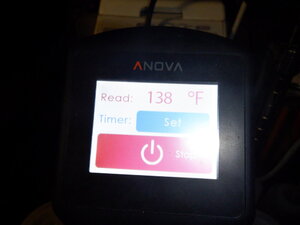
My set up...
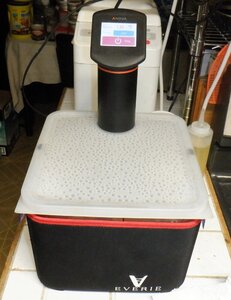
I've got blue and yellow weights... the meat is submerged, under the water.. hard to see..
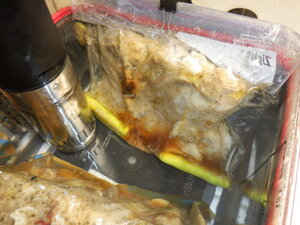
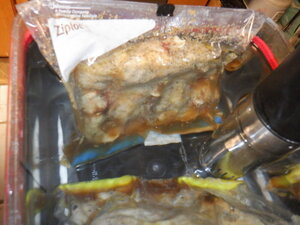
This sweet chili sauce is REALLY good on lots of stuff.. Not very hot...
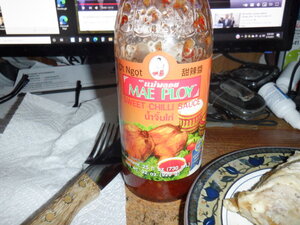
The bone has no red... the meat, the same... the chili sauce has some red... the gelatin from the chicken is delicious...
I'm gonna make some rice and add the gelatin, from both bags, to the rice... Good rice !!!
I love how moist the chicken comes out...
This should allow most of you, to "introduce" pasteurized chicken to folks that never touch red or pink chicken, and how juicy it is...
And some of these thighs were pretty big....
Thanks for looking....
Dave
RICE..... The gelatin from 1 bag of chicken thighs was plenty... It's cooking now.... I did add water to the cooker....





